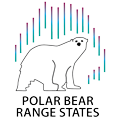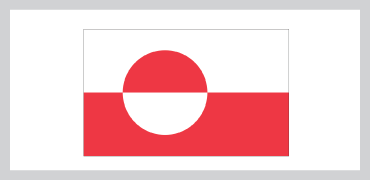Legislation
Conservation and management of wildlife and their habitats, including requirements concerning the polar bear and other rare and endangered species, are regulated by a number of environmental and natural resources management laws, decrees of the Russian government, sectoral and other regulations (i.e. specific articles of Forest, Civil, Criminal and Administrative Codes of the Russian Federation).
The Federal Law on Fauna regulates relationships in the area of overall conservation and management of wildlife, as well as conservation and restoration of wildlife habitats to ensure biodiversity and sustainability, creating conditions for wildlife to persist over the long term; conservation of genetic diversity; and other forms of wildlife conservation as an integral component of the environment.
Legal regulation of the polar bear’s protected status is also ensured by other federal laws: “On Environment Protection”, “On Specially Protected Natural Areas, “On Hunting and Conservation of Game Resources”, and Federal Decree “On approval of the list of especially valuable wild animals and water biological resources belonging to the species inscribed in the Red Data Book of Russian Federation and/ or protected by international agreements of the Russian Federation”. Conservation measures for the polar bear are also affirmed in the Order of the Government of the Russian Federation from February 17, 2014 # 212-r “Strategy for Protection of Rare and Endangered Species of Animals, Plants, and Mushrooms for the period up to 2030”.
The handling of the species included in the Red Data Book of the Russian Federation, including the polar bear, is regulated by the Decree of the Russian Federation Government from March 13, 2022 #343 “On Procedure of Issuing Permits for Handling of Wild Animals Belonging to the Species Included in the Red Data Book of the Russian Federation”.
Historically, Russian legislation concerning polar bear conservation has been continuously strengthened through various Amendments to the Federal Law on Fauna in terms of the strengthening of state control in the field of protection, recovery and use of wildlife and their habitats, Amendments to the Criminal Code of the Russian Federation and other legal acts issued by the Government and the Ministry of Natural Resources and Environment of the Russian Federation. Article 258.1 of the Criminal Code, introduced in 2013, implies imprisonment for up to seven years for illegal actions against high-value wild animals, including polar bears.
Three polar bear subpopulations that occur in Russia are included in the Red Data Book of the Russian Federation, with each population assigned a different conservation status:
- Kara-Barents subpopulation—Category 4 (Indeterminate status)
- Laptev subpopulation—Category 3 (Rare)
- Chukotka-Alaska subpopulation—Category 5 (Recovering).
The federal Red Data Book is updated every 10 years, revising the status of the subpopulations. The last version of the Red Data Book was issued in 2021.
The polar bear is also listed in the Red Data Books of 7 Russian administrative regions: Republic of Sakha (Yakutia), Arkhangelsk Region, Nenets Autonomous Okrug, Yamalo-Nenets Autonomous Okrug, Chukotka Autonomous Okrug, Kamchatka Krai, and Krasnoyarsk Krai.
Conservation and management of two subpopulations of the Polar Bear (Kara-Barents and Chukotka-Alaska) are also conducted under the bilateral agreements: Bilateral Environmental Agreement between the Government of Russia and the Government of Norway, including Provisions on Polar Bear Conservation, and Agreement Between the Government of the United States of America and the Government of the Russian Federation on the Conservation and Management of the Alaska-Chukotka Polar Bear Population.
In the framework of Russian-Norway Agreement, the Ministry of Natural Resources and Environment of the Russian Federation and the Ministry of Climate and Environment of Norway have signed a Memorandum on cooperation in the monitoring of Polar Bears in the Barents Sea in 2015.
In the framework of the Russian-US Agreement, a sustainable quota of no more than 85 polar bears per year for the Alaska-Chukotka subpopulation was established in 2018 on the last meeting of the Parties. Russia does not use its part of the quota.
Habitat Protection
The key polar bear habitats in the Russian Arctic, including maternity dens and hunting sites, are protected in the following Specially Protected Natural Areas:
State strict nature reserves (zapovedniks):
- Wrangel Island (2,225,650 hectares (ha), including 1,430,000 ha of sea area; Chukotka Autonomous Okrug);
- Great Arctic (4,169,222 ha, including 980,934 ha of sea area; Krasnoyarsk Krai);
- Ust-Lensky (1,433,000 ha; Republic of Sakha (Yakutia);
- Gydansky (878,174 ha; Yamalo-Nenets Autonomous Okrug);
- Taimyrsky (1,781,928 ha, Krasnoyarsk Krai);
- Medvezhyi Islands (815,568 ha, Republic of Sakha (Yakutia).
National parks:
- Russian Arctic (1,426,000 ha, including 793,910 ha of sea area; Archangelsk Region);
- Beringia (1,800,000 ha, including 300,000 ha of sea area; Chukotka Autonomous Okrug);
- Kytalyk (1,885,554 ha, Republic of Sakha (Yakutia).
State federal nature reserves (zakazniks):
- Franz Josef Land (4,200,000 ha, including 2,600,000 ha of sea area; Archangelsk Region);
- Severozemelsky (421,701 ha; Krasnoyarsk Krai);
- New Siberian Islands (6,594,496 ha, including 4,894,124 ha of sea area, Republic of Sakha (Yakutia).
State regional nature reserves (zakazniks):
- Vaygach (242,778 ha; Nenets Autonomous Okrug);
- Chaunskaya Guba (210,000 ha; Chukotka Autonomous Okrug);
- Yamalsky (1,402,000 ha; Yamalo-Nenets Autonomous Okrug).
Regional natural monument:
- Cape Vankarem (40 ha; Chukotka Autonomous Okrug).
Regional resource reserves in Republic of Sakha (Yakutia):
- Buustaakh (1,464,711 ha);
- Kurdigino Krestovaya (1,067,100 ha);
- Lena Delta (5,932,000 ha);
- Bear Islands (6,000 ha);
- Terpey-Tumus (1,112,000 ha);
- Chaygurino (2,375,600 ha).
Management System
The Ministry of Natural Resources and Environment of the Russian Federation is responsible for the development of state policies on wildlife conservation and recovery, as well as for the wildlife conservation (including Polar Bear conservation) inside the federal Specially Protected Natural Areas.
Some federal powers for wildlife conservation and management (including red listing species) outside the federal Specially Protected Natural Areas have been delegated to the regional authorities in the subjects of the Russian Federation.
The Federal Service for Supervision of Natural Resources (Rosprirodnadzor) is responsible for overseeing wildlife protection inside the federal Specially Protected Natural Areas, as well as for the execution of powers delegated to the subjects of the Russian Federation.
The handling of polar bears requires a permit issued by Rosprirodnadzor in accordance with the Rosprirodnadzor Administrative Procedure for Issuing Permits for Handling of Wild Animals Belonging to the Species Included in the Red Data Book of the Russian Federation, approved by the Order of Rosprirodnadzor from June 29, 2020 #746.
National Actions on Polar Bear Conservation
In 2022, the Ministry of Natural Resources and Environment of the Russian Federation approved the Strategy for Polar Bear Conservation in the Russian Federation developed within the framework of the federal project “Conservation of Biological Diversity and Development of Ecological Tourism”, by Order #7-r from March 1, 2022. The measures of the Polar Bear Conservation Roadmap are being implemented, aimed at improving the effectiveness of polar bear conservation, preventing and resolving conflict situations between humans and polar bears, organizing and conducting research and monitoring of polar bears, including population counts, environmental education and environmental tourism.
Considering the importance of up-to-date information on the number and population distribution of polar bears, the Ministry of Natural Resources and Environment in collaboration with other organizations launched an unprecedented initiative, the Polar Bear Census. In September 2022, a new method of polar bear monitoring - using Russian-made Orlan unmanned aerial vehicles - was tested for the first time on Wrangel Island to accurately assess the population status. The expedition assessed the state of the Wrangel Island polar bear group, its main food base and habitat. The total calculated population size of the polar bear grouping on Wrangel Island was 864 individuals, more than one third of the entire Chukotka-Alaska subpopulation.
In 2023 and 2024, polar bears were monitored in the Medvezhyi Islands Nature Reserve also using Orlan unmanned aerial vehicles. In 2023, more than 25 thousand high-resolution images were taken, with several tens of thousands taken in 2024 as well. This project is also the first one in Russia to use a specially trained neural network to determine the number of polar bears on the Medvezhyi Islands.
Furthermore, public attention is frequently drawn to the current issues of polar bear conservation. Since 2017, international conference “Polar Bear Universe” has been conducted in Chukotka Autonomous Okrug on an annual basis with organizational and media support from the Ministry of Natural Resources and Environment of the Russian Federation – the 7th Conference took place on March 19-21, 2024. The purpose of the event is to present national studies on the state of the polar bear population and protection of the species, and to study the experience of indigenous peoples in peaceful coexistence with the polar bear.




